As I have already mentioned, the Tsaranoro and Namoly valleys through which the mountain massif Andringitra in the central part of Madagascar is accessed are very special, since annually they get less than 3,000 visitors. Most of them come here during the dry season since the main activities are hiking and alpinism and that is certainly done better when it is not raining and the rocks are not slippery. During the rainy season, there is almost nobody. Thus, the two of us were the only guests in our “camp.” Thinking about how few people came here made me very content. Not because this is a place that rare individuals in this world have visited and then that somehow makes me “exceptional and special.” This means nothing to me at all and even my ego does not find any pleasure in such a piece of data. After all, there is not a place in the world that has not been visited by somebody and I have no ambition to search for such places. This has no value to me. But, the fact that few people come here does mean that many things are unspoiled and unchanged, plus the air and the energy are exceptionally clean. Not to mention the perfect peace there is here.
Admittedly, at some point we could hear frogs from the surrounding rice fields and then the rain started to patter from time to time on the roof of the veranda where we were sitting, followed by crickets that started to call with an incredibly loud sound. A little later, we could also occasionally hear the dull thunder in the distance.
We spent at least a couple of hours sitting on that veranda and after I had positioned the woven armchair at a place that suited me well, I sat on it cosily and without uttering a word enjoyed the sight in front of me. I found everything to be perfect and there was nothing else I needed. These were one of those rare moments of perfect inner peace and calm. I would only turn my video camera on from time to time to document some essentially small audio-visual changes that were taking place on account of the falling rain, which then stopped, or the crickets that I could hear faintly at first and then loudly, the day that was getting close to its end, and all of this intermingled with the sounds of the nearby cascade and other sounds that regularly accompany nature. After the dinner we would return to our positions on the veranda and thus I ended up the video recording for the day with the darkness, but when preparing this sequel of the story I also added a part of the recording from the following morning. Sometimes dramatically, sometimes imperceptibly and sometimes in a heavenly setting such as this one, yet the time passes and so do our lives in it.
So, at some point we moved from the veranda to a table where we were to have our dinner, still as the only guests, while the efforts around the very tasty meal was as if we were in a fine restaurant and not the restaurant of a “camp” in the middle of nowhere. Everything delighted me and I enjoyed thoroughly. Especially with a large local beer, THB, ordered for the first time (until this point I would order small one).
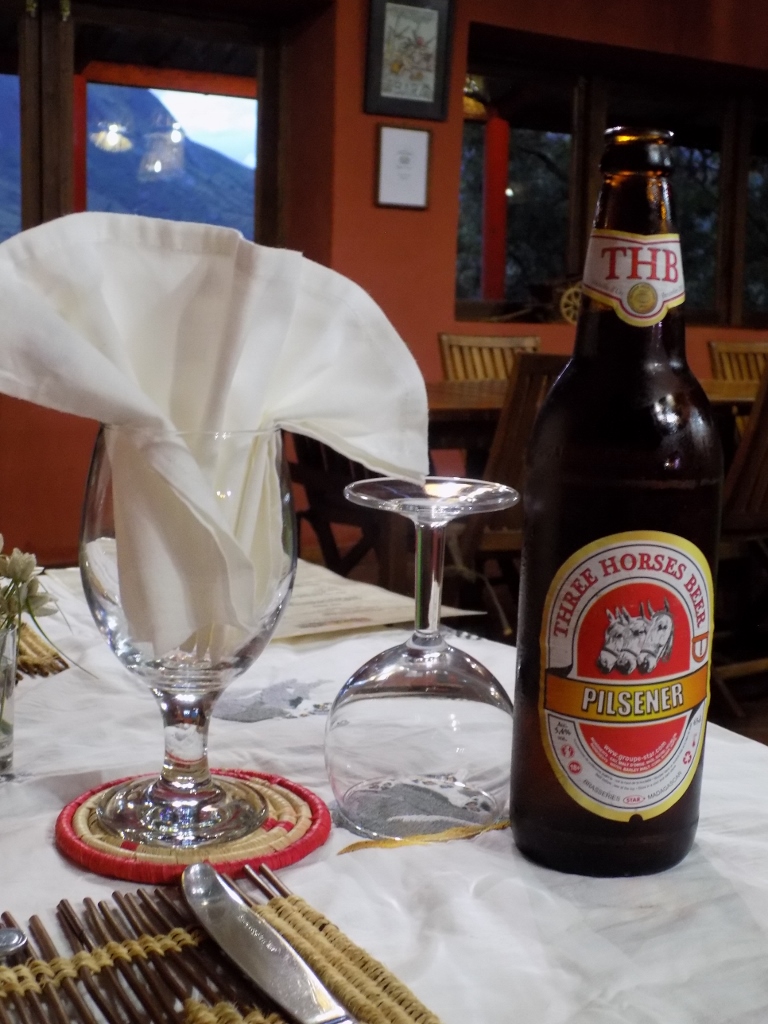 Three Horses Beer of 600 ml
Three Horses Beer of 600 ml
The dinner consisted of a very tasty starter and a main dish, while the desert included different fruits prepared in a sauce that contained the pink peppercorn. This, in fact, is not a proper pepper, it is a plant that originates in Peru, but it is very popular here as a seasoning. The result was a very interesting combination of flavours.
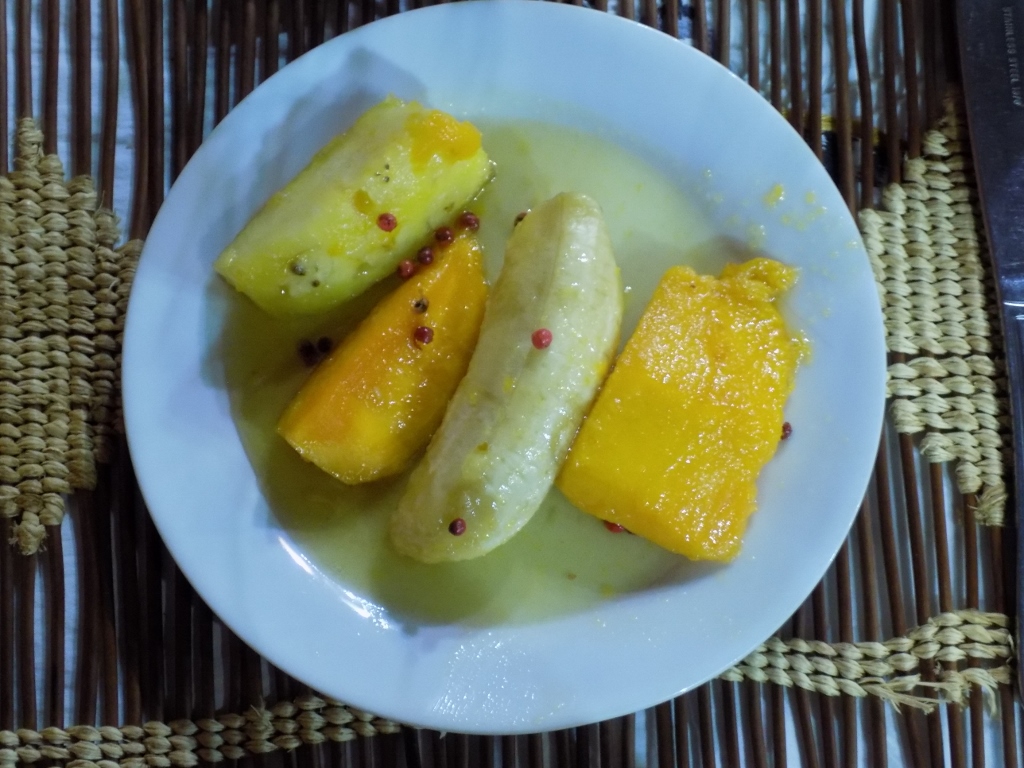 Desert – fruits and pink peppercorns
Desert – fruits and pink peppercorns
We ended our evening by sitting for a dozen minutes more on the above-mentioned veranda and where there used to be images of fields and mountains there was only darkness now. Ideal for relaxation.
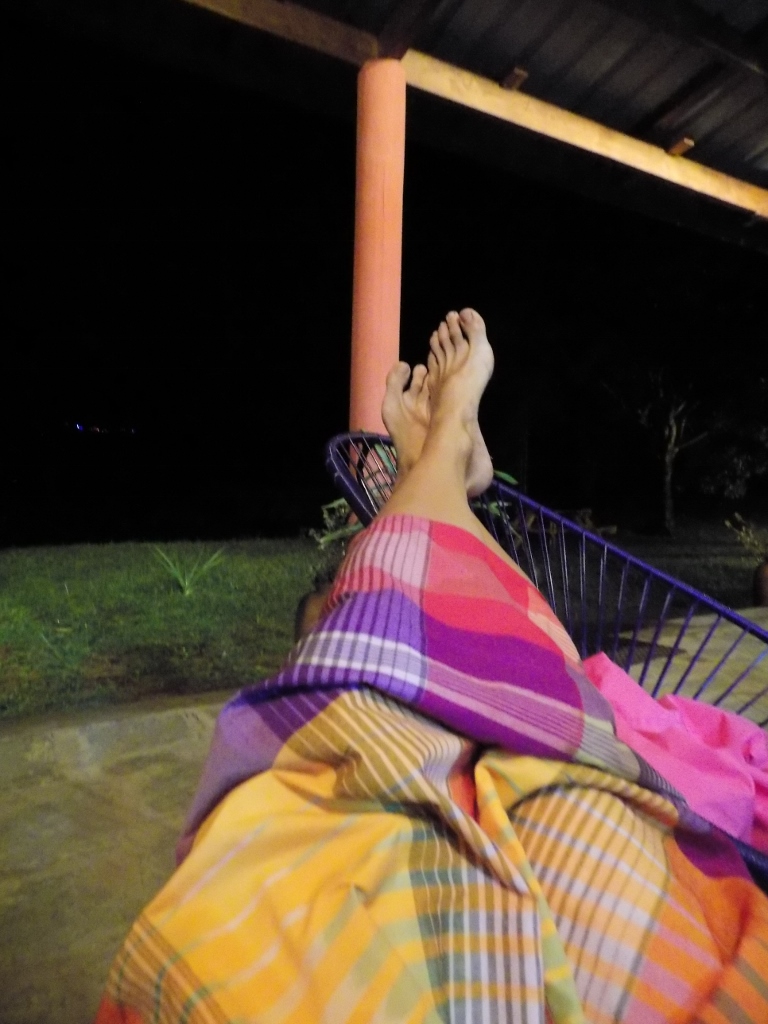 Relaxing on the veranda
Relaxing on the veranda
Then we went back to our room, i.e., the tent. And as if everything until that moment was not sufficiently nice, seductive and fantastic, I had one of the most amazing experiences in that room and that was – taking a shower.
I went to my shower “cabin” which, as I mentioned in the previous sequel of these stories about my journey, did not have a roof and while the warm water from the shower fell down my body, my head and my hair were wetted by the rain that was quite intensive at the time and I could not stop grinning. If I hadn’t had ecological inclinations and if I hadn’t been aware of the water I was using, the electricity required for the heating and the pumping of the water, I believe I would have stayed there for two hours. This way, I only returned to the room extremely content and soon settled in my bed.
We had electricity until 10 pm which in this case involved a lamp above the bed. While I was writing about my impressions on the computer, since I wanted to record my emotions and thoughts as authentically as possible, it rained constantly and although we were surrounded by a thin fabric that served as a net against mosquitoes and other insects, the sounds of the rain’s pattering on the roof above our tent and on the surrounding vegetation were mesmerising. In some moments of my life I feel deeply sorry because I need to sleep, as was the case here, but although it was relatively early, the sleepiness started to make my eyelids heavy and soon, even before the electricity was out, I turned off the lamp, closed my eyes and got lost in my sleep.
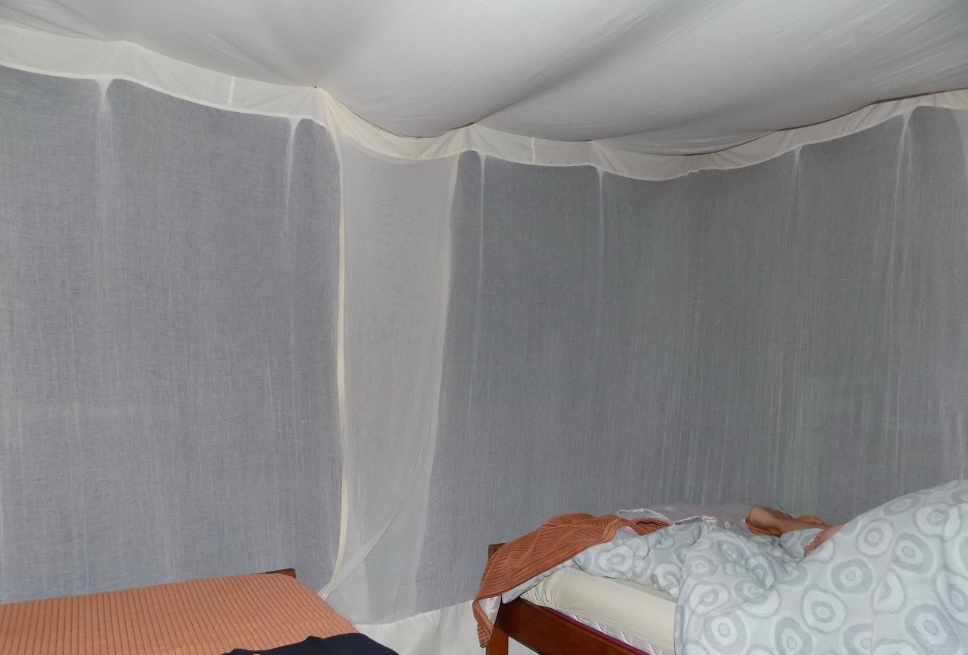 Surrounded by a mosquito net
Surrounded by a mosquito net
Although the Andringitra National Park is practically heaven for active hikers and very serious alpinists, Sneža and I are neither. We concluded that we did have the desire, the willingness and readiness, but we were short on fitness. And the fitness in this case, as Sneža put it, is somehow among the top priorities. So, we opted for a nice lowland walking tour of several hours, content that we would watch the mountain heights from the frog-view. The frogs are living beings after all and should not be looked down upon.
To start with, I woke up very early. This is logical since I also went to sleep very early. The Sun had started to appear partially behind a mountain, but the clouds seemed to persevere somehow. This did not stop me, however, from walking around the surroundings and apart from my own footsteps there was nothing else that disturbed the sounds of nature.



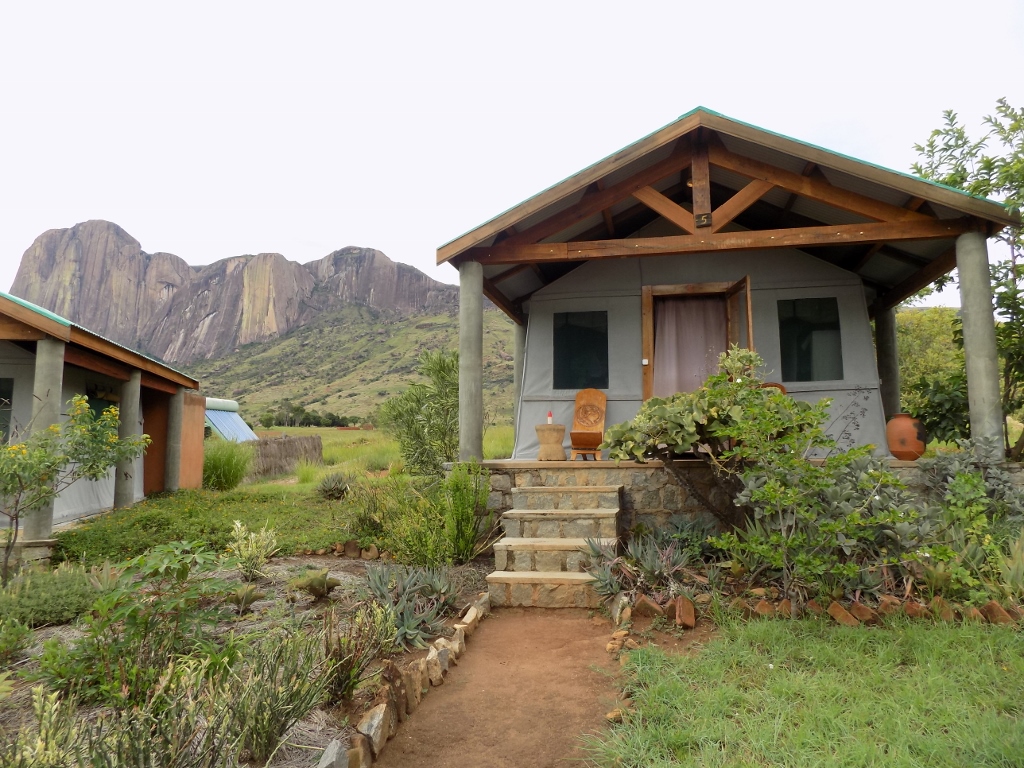 Our tent and Tsaranoro Mount in the background
Our tent and Tsaranoro Mount in the background
After taking some photos, I went back to the restaurant section where I wrote some more waiting for Sneža so that we can have breakfast together.
Following the breakfast, we got ready, i.e., we put on the appropriate footwear and then we were set to go. Let me just say a few words about the footwear for this journey. Although it is mostly very hot here, when going for a walk in nature, it is always recommendable to wear some “serious” shoes. So, none of the flip-flops or light flats. They are quite fine for walking in the streets and even along a dirt road, but any stay in nature requires either good quality sneakers or hiking boots. Both types need to have good outsoles which ensures good adherence against the rock. I left Belgrade in hiking boots which served me there instead of winter boots, while Sneža had good sneakers. We had this type of footwear on when we visited the Kirindy Forest Natural Reserve, because regardless of the heat, it is good to have shoes that would ensure solid protection of your feet. The previous day I reached the Anja Reserve wearing plastic clogs, but before venturing out for a walk in nature, I changed into my hiking boots. Otherwise I would not be able to visit all the places I went to this way. So, on this day, too, I had my “winter” boots on, but I was quite content. The morning was cloudy and I was afraid it could start raining.
What is recommended to the visitors of the Tsaranoro Valley, as well as those who go to the other one, the Namoly Valley, is to go on walking tours around the nearby mountains, including also the climbing to Pic Boby which, with its 2,658 m, is the second highest peak of Madagascar and is located in the Andringitra massif (this peak is climbed from the Namoly Valley). The climbing from the Tsaranoro Valley is focused on Mount Chameleon and Mount Tsaranoro, 1.540 m and 1.910 m high, respectively. Mount Tsaranoro also includes a vertical cliff around 800 m high which is considered to be one of the most challenging in the world and it is certainly the place where only the very experienced climbers dare go.
Needless to say, all of this was outside the scope of our capabilities, as well as of our interests. We were simply interested only in a walk. So, we were advised to take the dirt road and go to the nearby village at the foot of Mount Chameleon where we were to pay for the tickets that allowed us to enter the Andringitra National Park and where we would get a mandatory local guide. Along our way, we saw men working the fields while using zebus for the purpose.
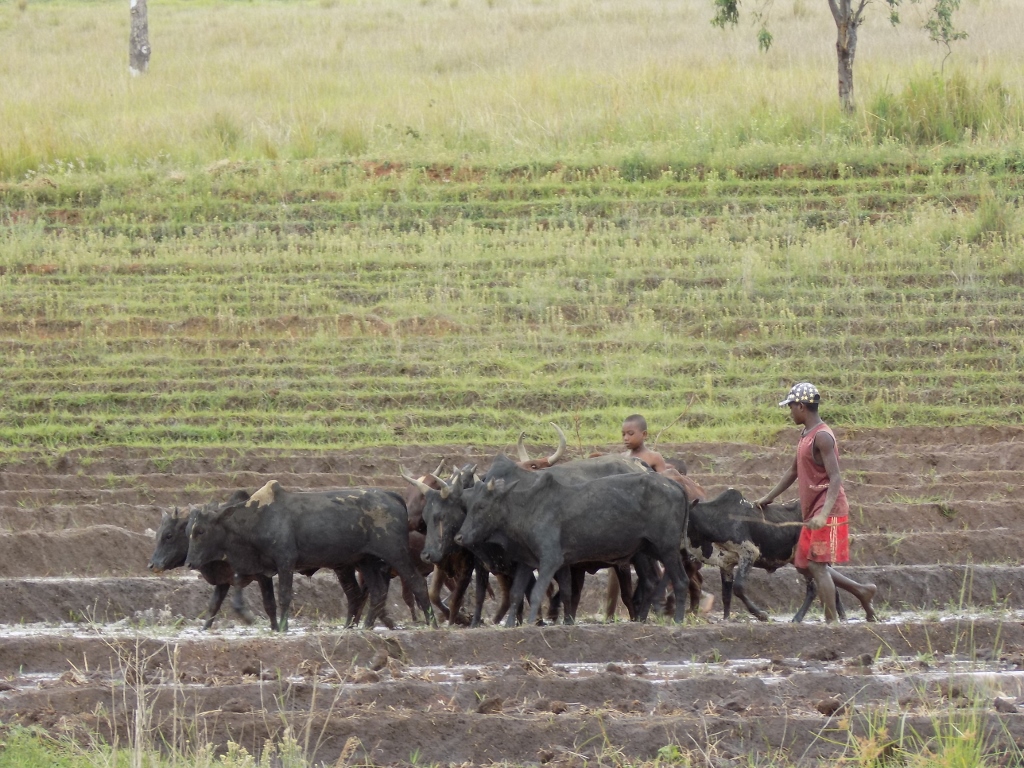 Ploughing of a rice field
Ploughing of a rice field
And then we also saw two young girls who were approaching us. One was smiling and radiant all the time, while the other one was not so much in the mood.
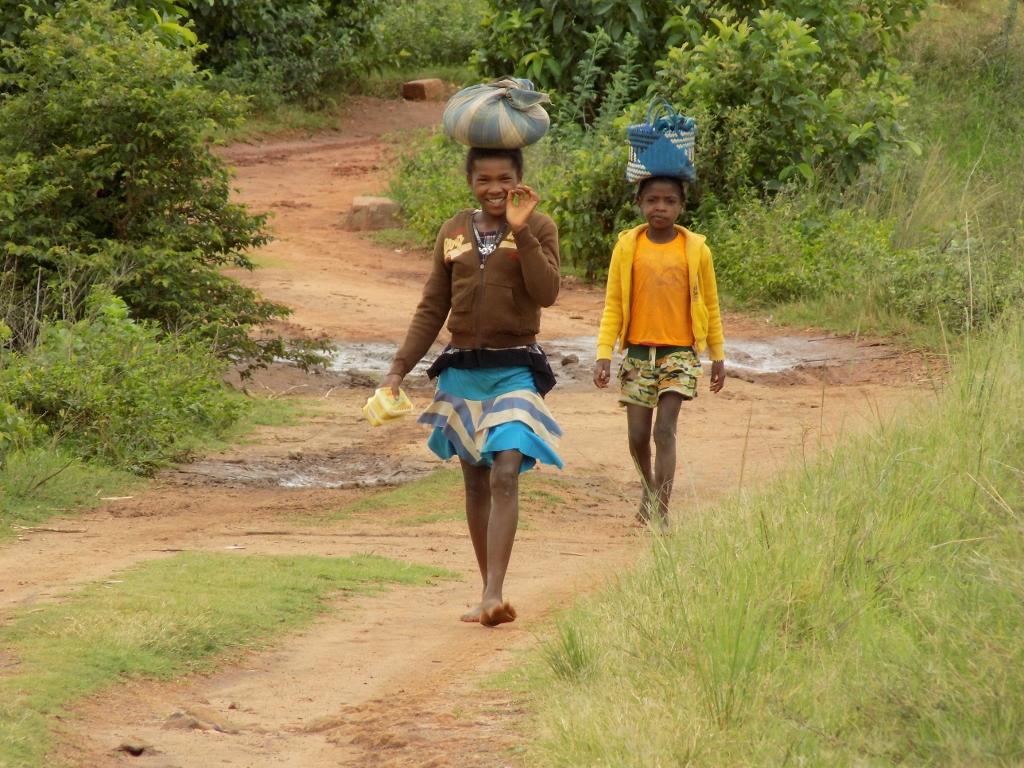 Local girls
Local girls
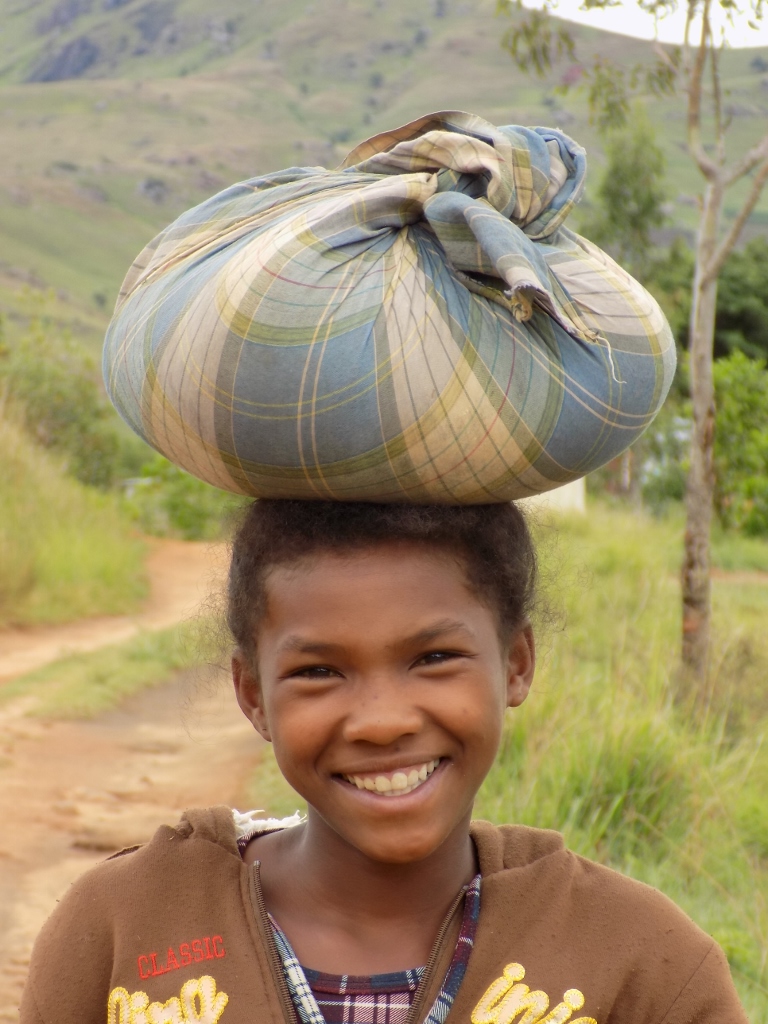 This girl smiled all the time...
This girl smiled all the time...
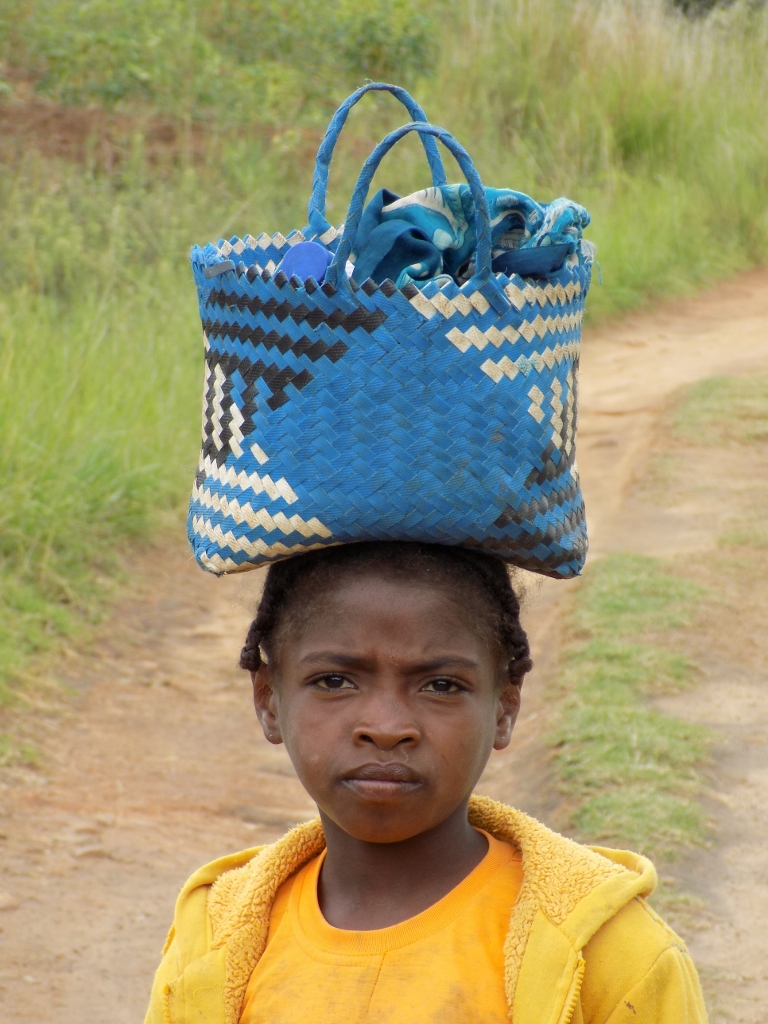 ... this one did not
... this one did not
While going along the dirt road we passed by several houses, as well as the outside walls of a church, but it was unclear to me if the church was still under construction or if it was in fact decaying. In any case, behind it I could see nicely the cliffs of Mount Tsaranoro.
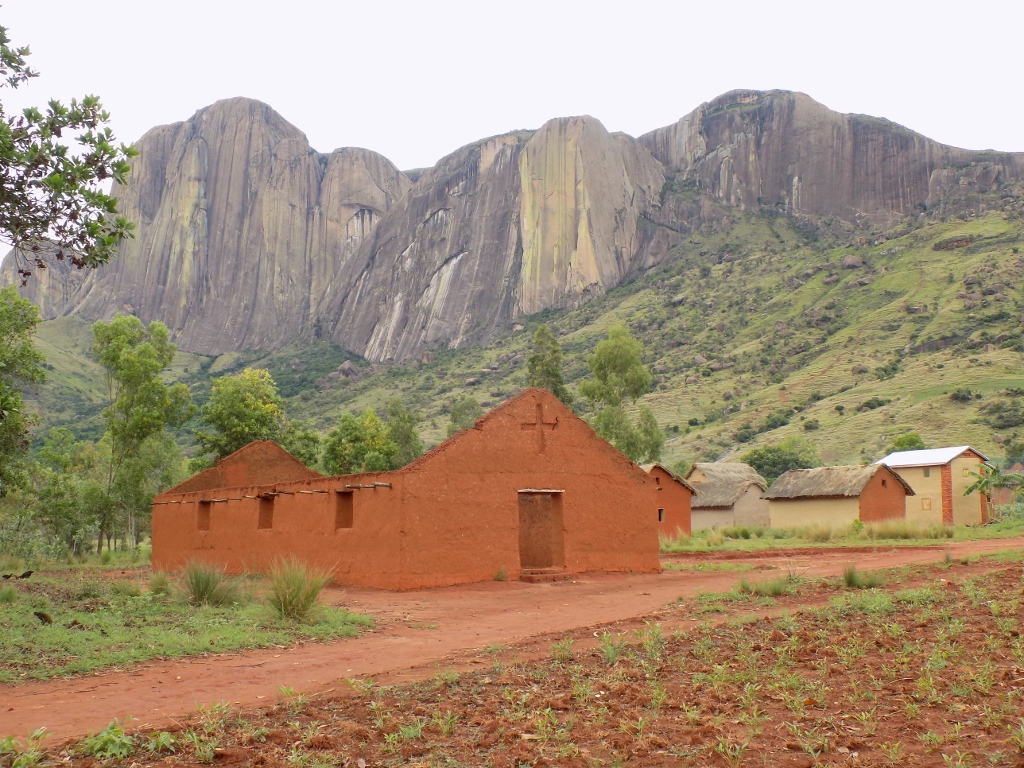 Foot of Mount Tsaranoro
Foot of Mount Tsaranoro
Another mountain that can be seen nicely from the Tsaranoro Valley is Mount Chameleon. The reason why it’s got this name is its shape which reminds the Malagasy of a chameleon.
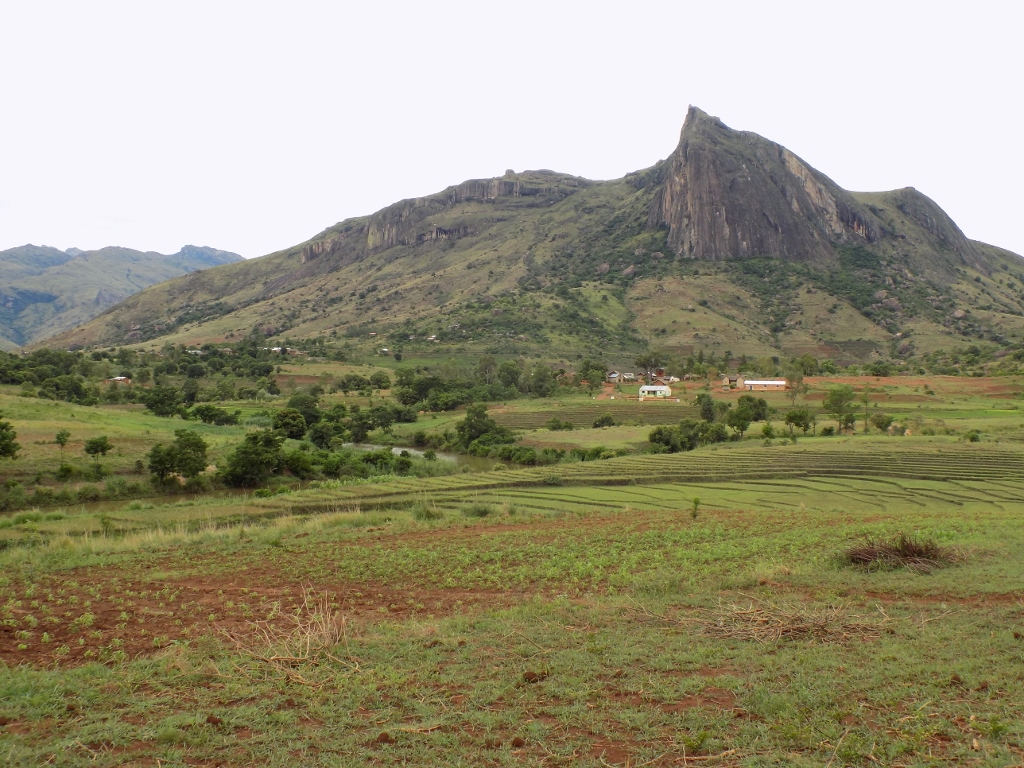 Mount Chameleon
Mount Chameleon

So, when we got to the village, we came across a larger house beside the road in which there was a ticket office, as well as a board that showed routes of different paths, the degree of their difficulty and the duration of individual tours. We opted for a visit to the “forest, pool and village,” while the time earmarked for the tour was 3 to 4 hours. We also got a guide and thus we could start.
First, while walking along narrow paths between fields we headed towards the forest that lies at the foot of Mount Tsaranoro. Already at the very beginning, I noticed beside a house a small baby who had been left there by somebody to sit quietly, until that somebody had finished with whatever work they had, I guess. And the child was sitting there quite quietly indeed. Do children on Madagascar have hyperactivity disorders?
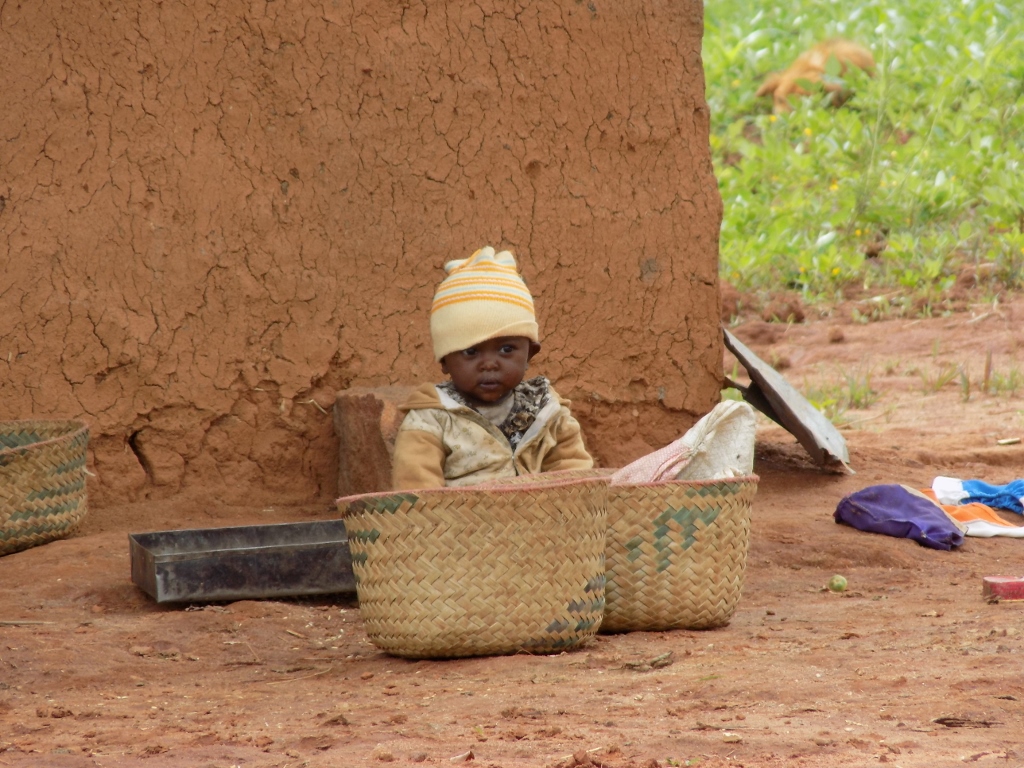 A small baby sitting quietly and waiting for somebody to return
A small baby sitting quietly and waiting for somebody to return
Along our way, we passed by numerous rice paddies, again at different growing stages and I also saw for the first time from up close a peanut field, as well as a cassava field.
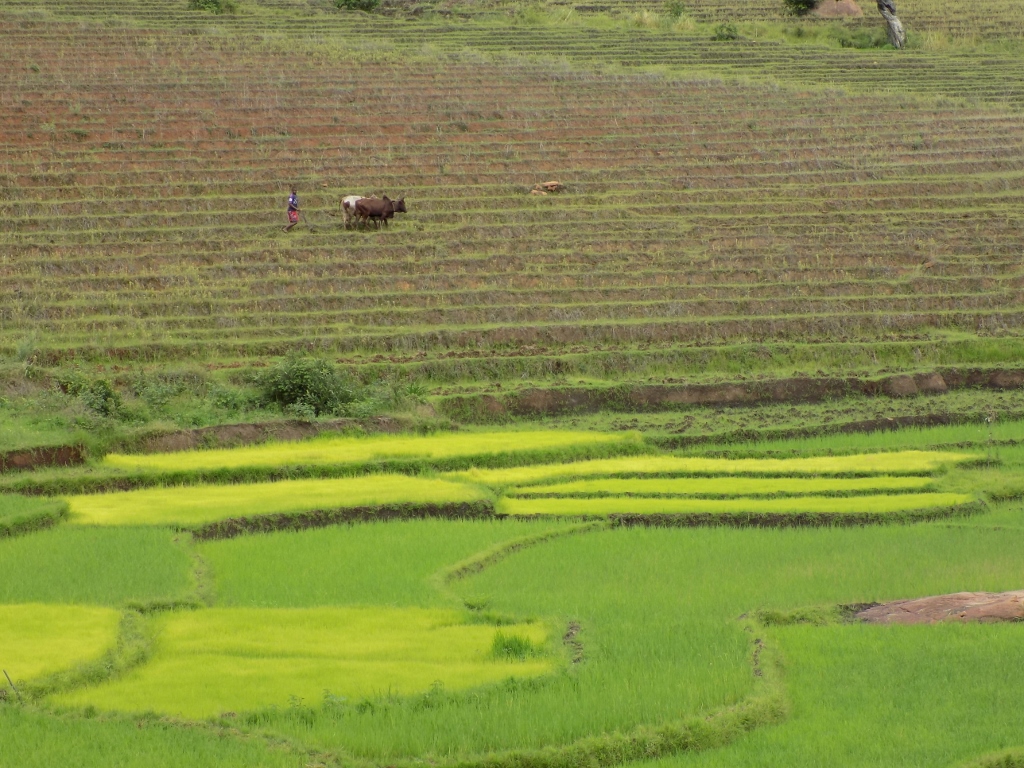 Rice paddies
Rice paddies
The peanut is a herbaceous plant and it is its seeds that grow underground in pods that are used in human consumption. What is interesting is that although there is a “nut” in the name of this plant, it is in fact not a nut at all, but a legume.
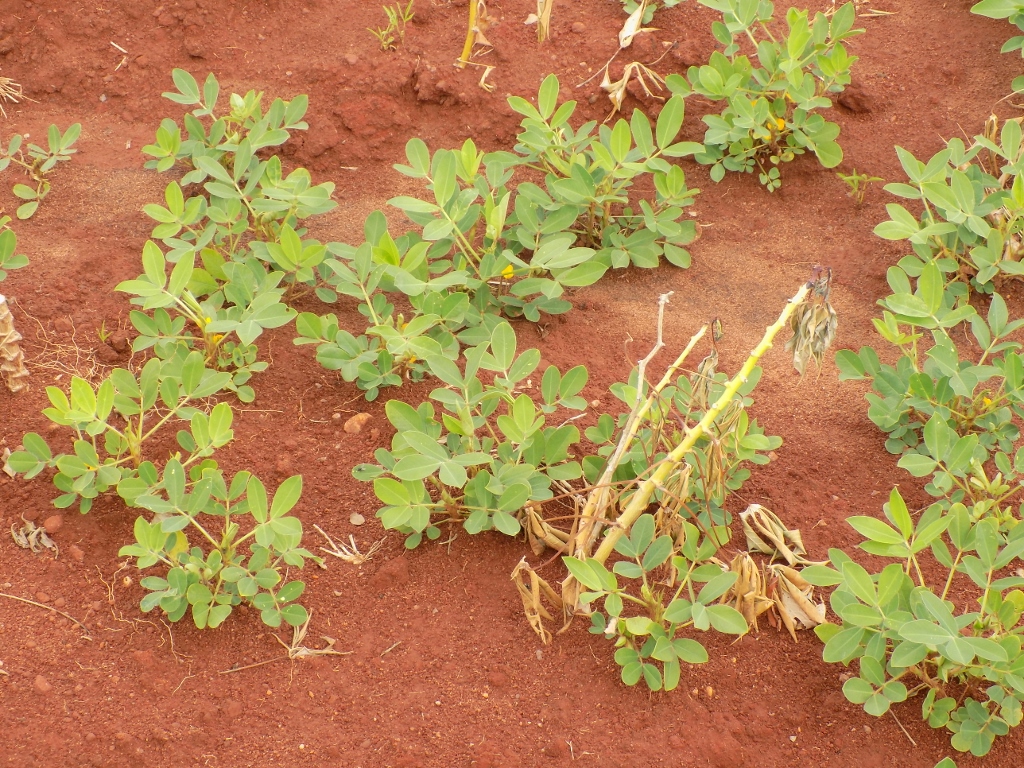 The aboveground part of the peanut plant
The aboveground part of the peanut plant
The cassava is a plant also called manioca, it originates from South America and is grown in tropical and subtropical areas. The root of this plant is used in human consumption and this is most often done by boiling it, although the cassava roots are also used for extracting starch from them which is then called tapioca and this is used like flour.
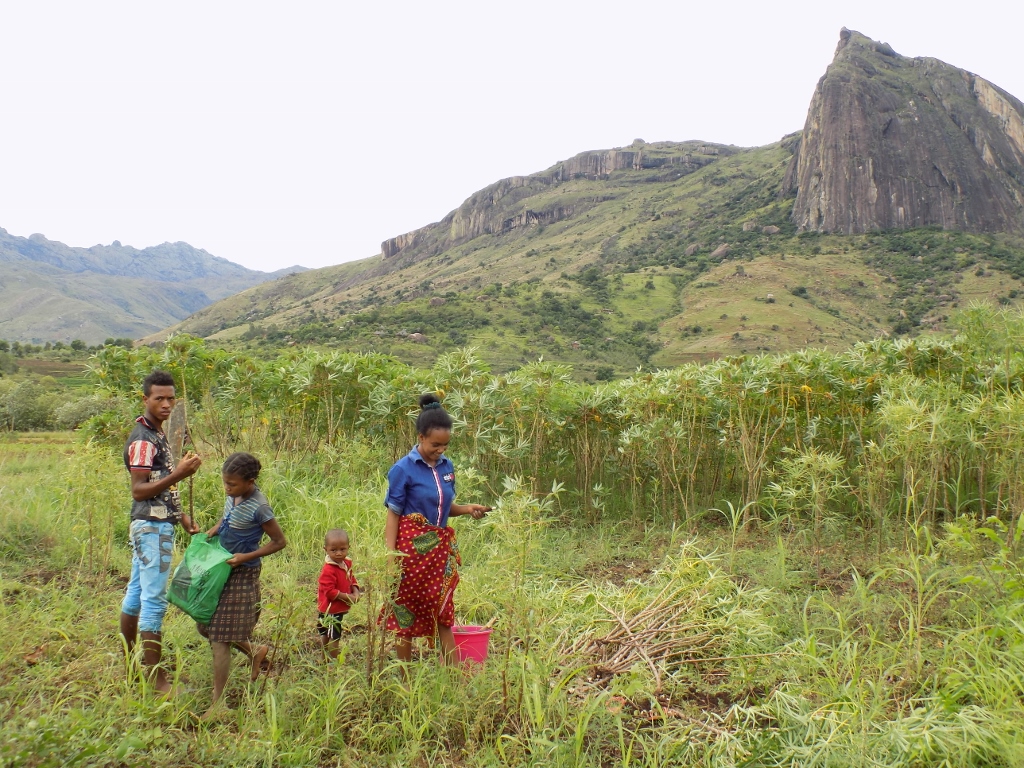 A family working a cassava field; Mount Chameleon is in the background
A family working a cassava field; Mount Chameleon is in the background
Not far from here we also saw a huge and fantastically colourful locust – the Rainbow Milkweed Locust (Phymateus saxosus). The guide told us that it was a poisonous insect since it feeds on some plant which itself is poisonous, while its colours serve to discourage anyone who would think of eating it. After I struggled to take a reasonably good photo of it, since the gentle wind kept waving the plant the locust was standing on, the guide caught its wings with his fingers in order for us to see better is incredible vividness.
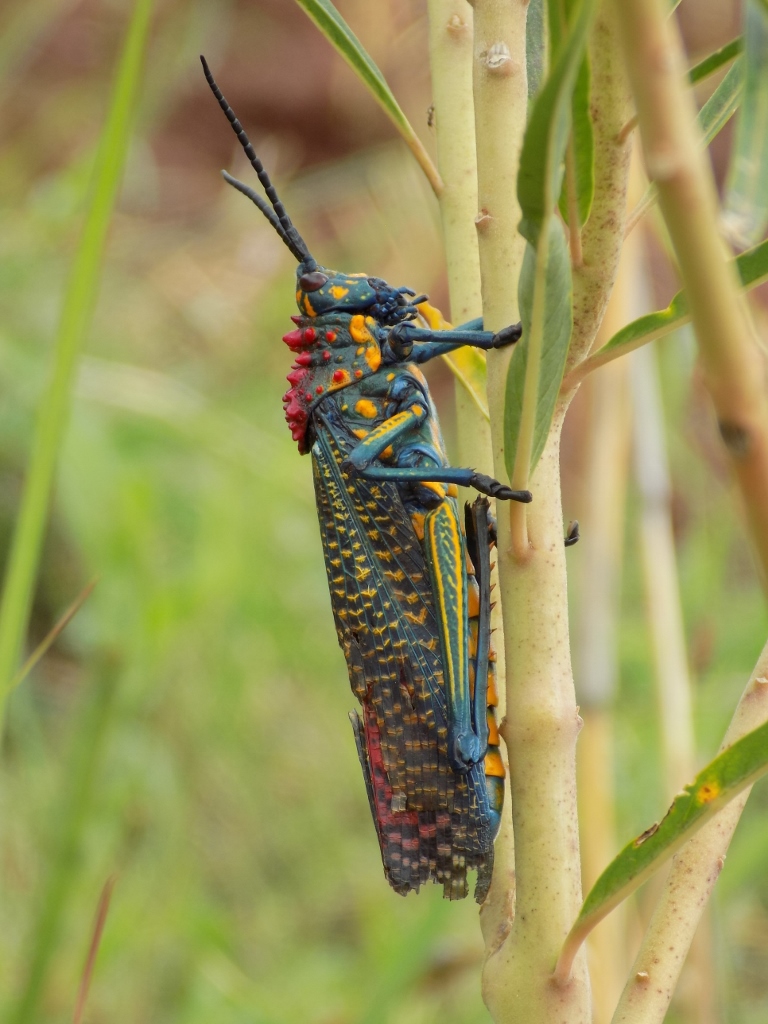 Rainbow Milkweed Locust
Rainbow Milkweed Locust
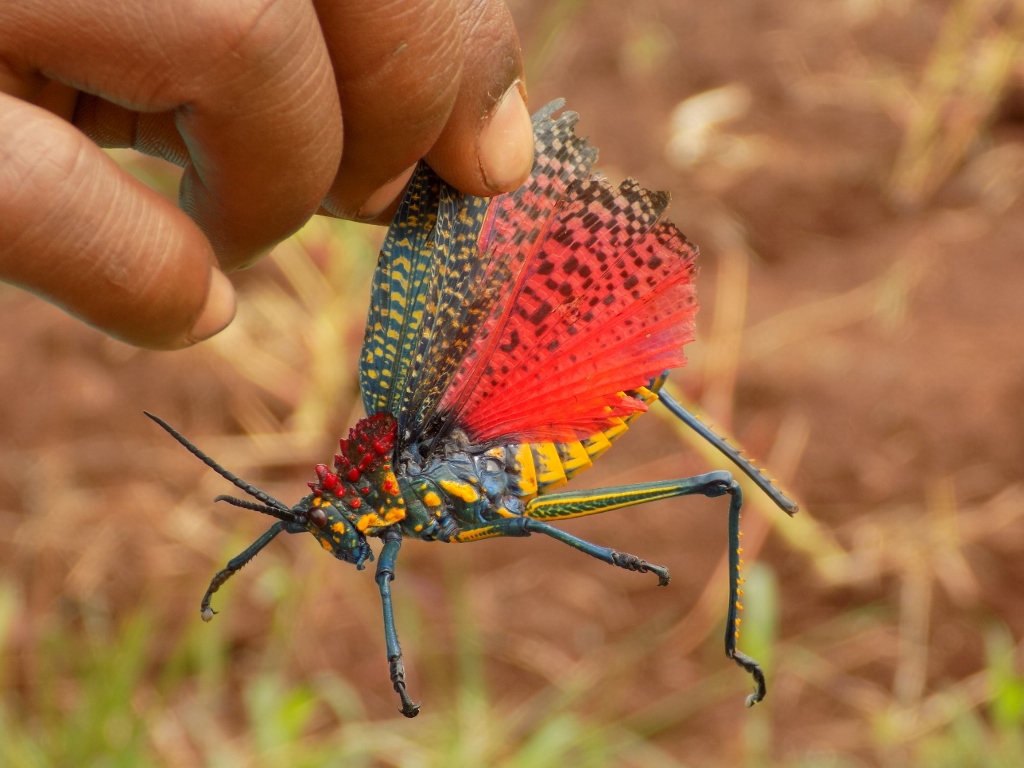 Rainbow Milkweed Locust
Rainbow Milkweed Locust
Then we started to walk slowly along a mild slope, thus going towards the forest. On a relatively big boulder we saw a nicely arranged pile of rocks. This was the place of the first funeral. Yes, yes... This concerns the first out of two funerals. Namely, like everybody, the Malagasy logically also have their traditions linked to the dying, the death and what is done with the remains of the deceased. In their case, this most often means that the dead person is buried, then after several days the corpse is taken out, washed, changed and wrapped in clean sheets, after which it is buried in some other place. Well, this was the place of the first funeral and these are in fact family tombs – when somebody from a family dies, they remove the stones, place there the dead person, return the stones and after a couple of days they remove the stones again, take the corpse in order to prepare it for the final funeral, while the stones are arranged again in their original place.
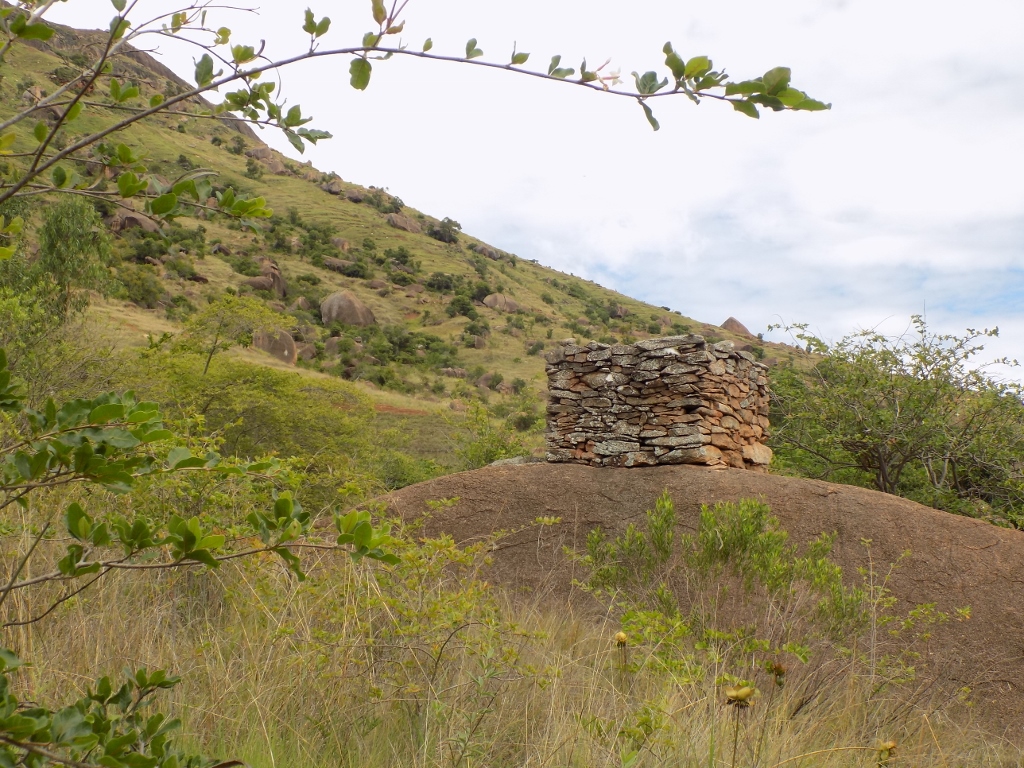 A tomb by the path
A tomb by the path
In this area, the bodies are buried for the second time precisely in this forest at the foot of the mountains and for this reason it is called the Sacred Forest. Before entering the forest, where I have to say we did not come across any tombs, I looked up at the cliffs of Mount Tsaranoro once again.
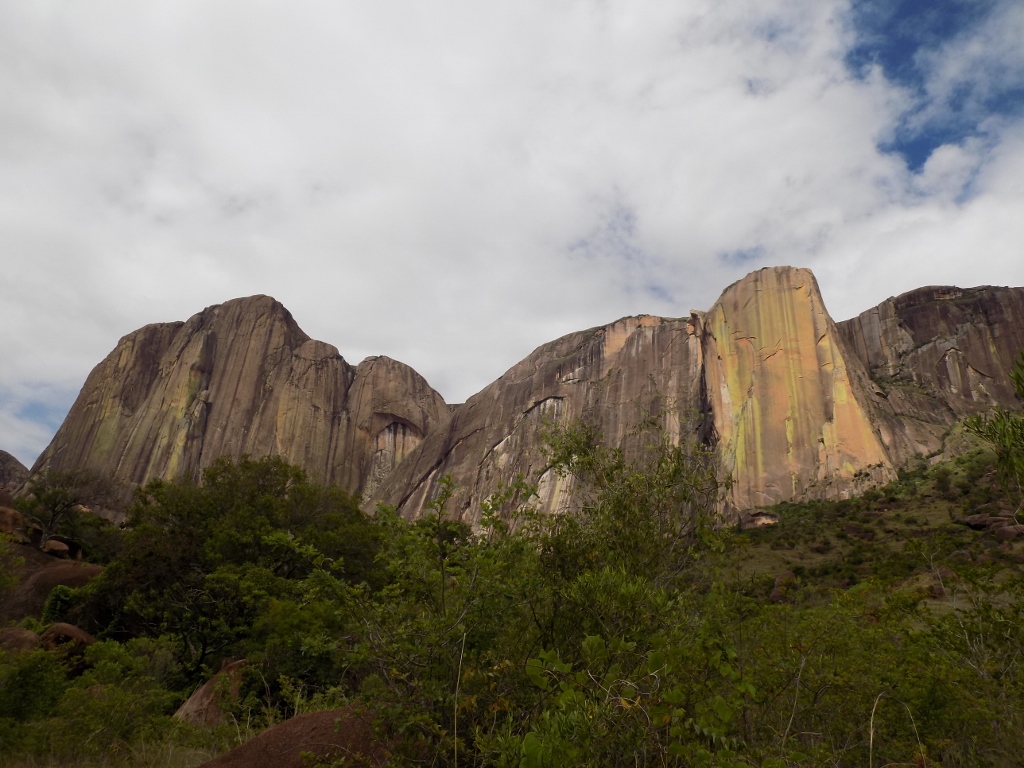 Cliffs of Mount Tsaranoro
Cliffs of Mount Tsaranoro
We walked through the forest by going over bigger or smaller boulders. All the time we were in fact following a path that was even marked, but it was still like squeezing through since we went uphill often climbing over these rocks and bending under tree branches, so we had to be very careful. In the end, we came to a very nice viewpoint which consisted of a large boulder that protruded from the surrounding vegetation.
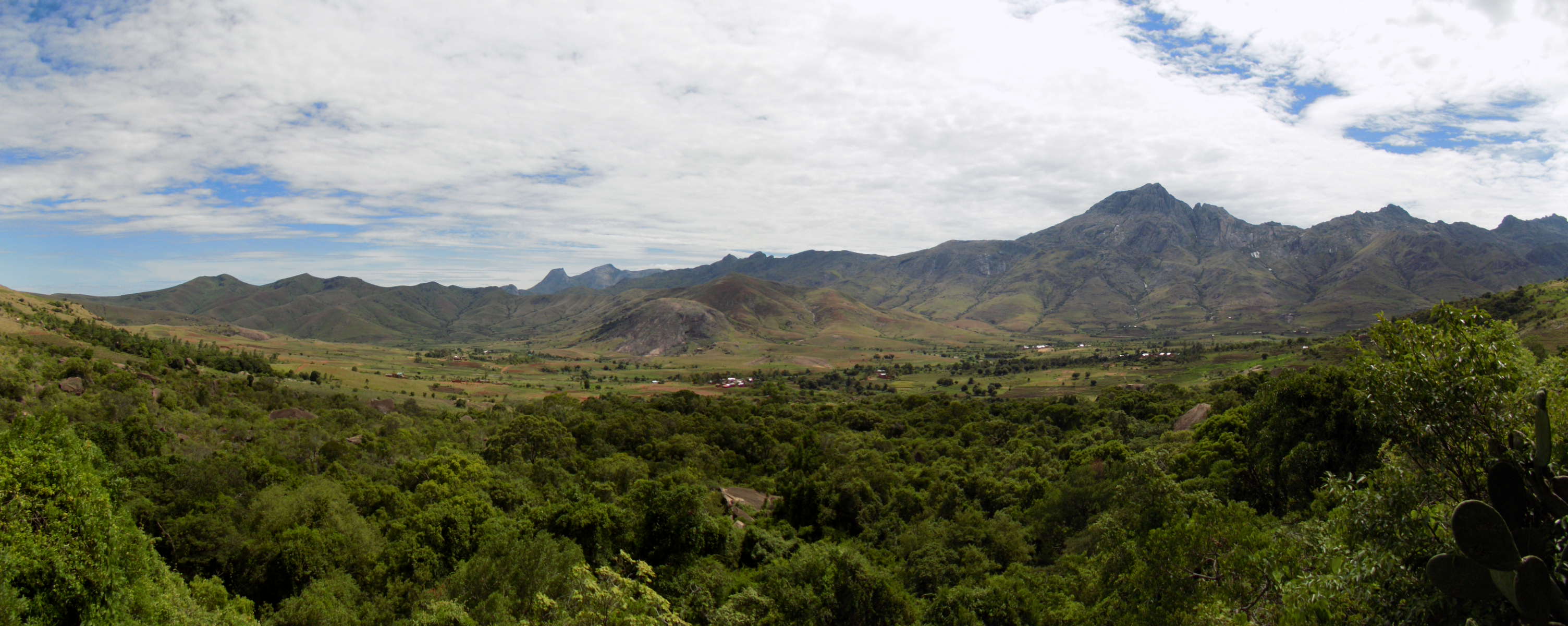
In addition to the climbing itself, there was another problem in the form of very high air humidity. The temperature was not too high and yet I was covered in sweat and often lacked the air. Still, I was ready to pose.
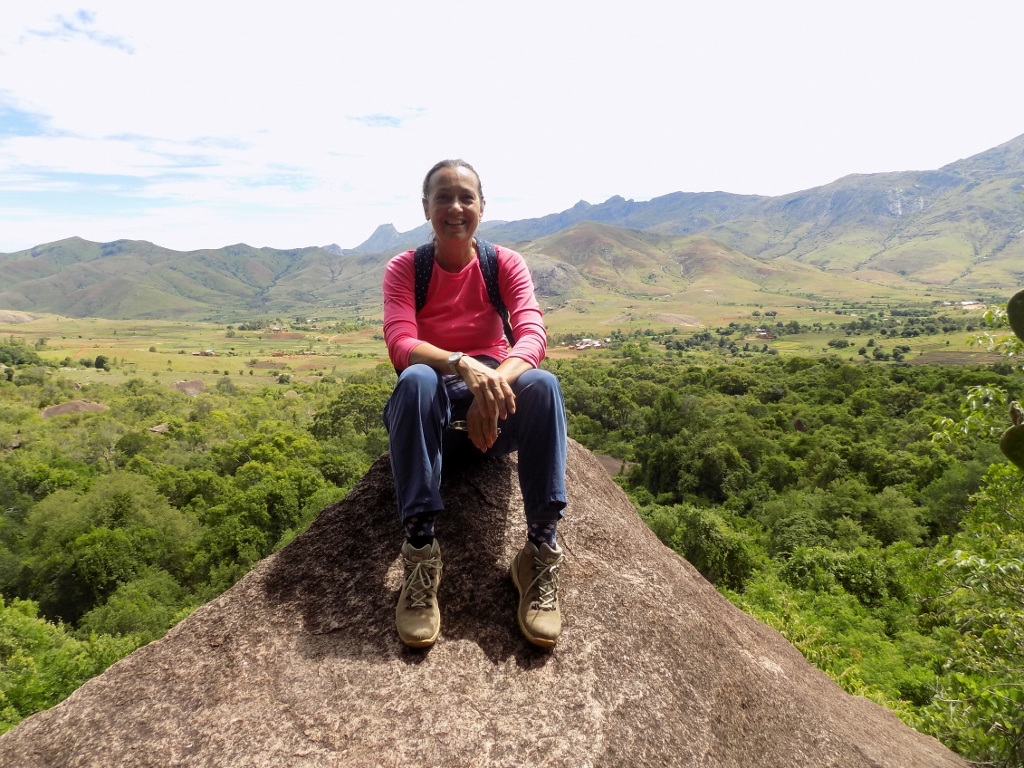 The Tsaranoro Valley is behind me
The Tsaranoro Valley is behind me
The guide told us that there were lemurs living in the forest, but we did not see any on this occasion. Still, while we were walking around the forest, the weather changed for the better and when we got out we could see that the clouds had started to thin out.
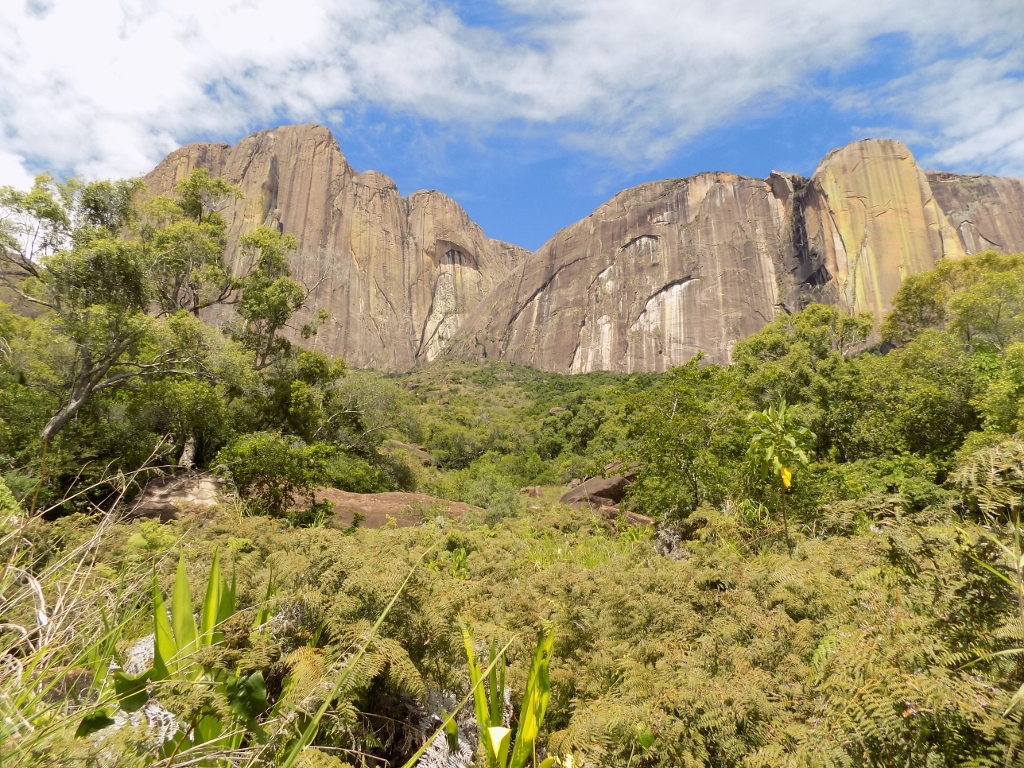 Cliffs of Mount Tsaranoro and the blue sky
Cliffs of Mount Tsaranoro and the blue sky
When getting out of the forest we came across a large number of agaves in one place and there the guide showed us how to make a rope out of the agave leaf fibres. It is just one of the many uses of this plant. After this short break of a sort, we came to yet another viewpoint – and the view was perfect!

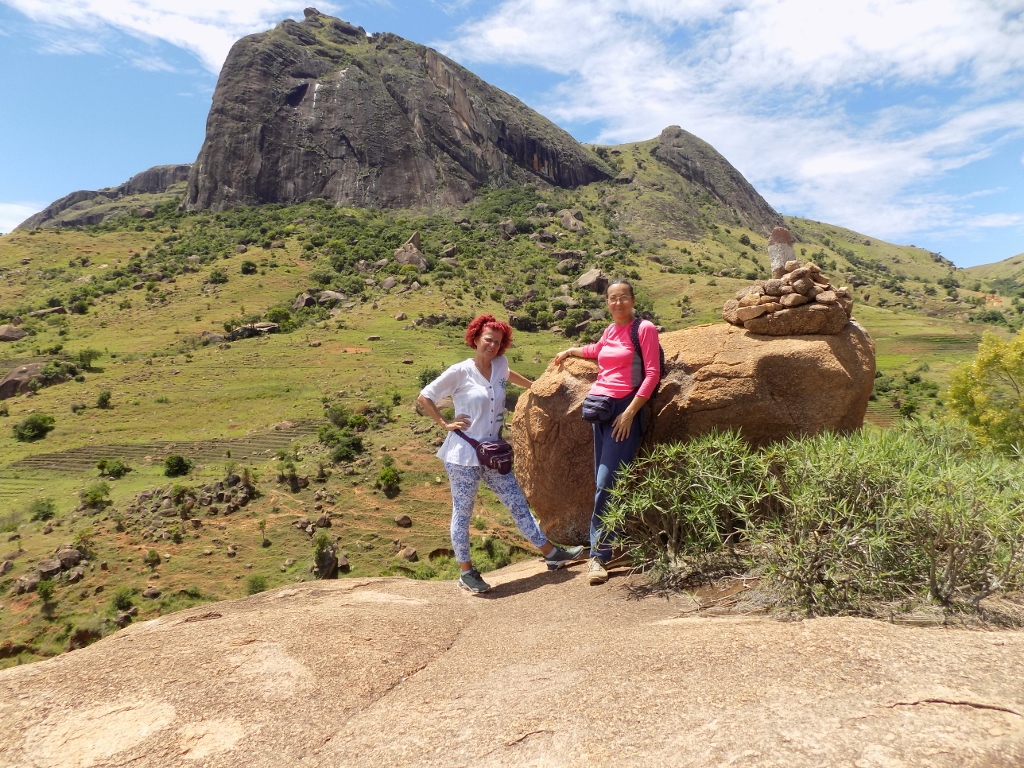 With Mount Chameleon in the background
With Mount Chameleon in the background
There, as it can be seen above, we asked the guide to take a photo of us, after which I looked up again towards the cliff that belongs to Mount Tsaranoro and that seems so inviting for climbers.
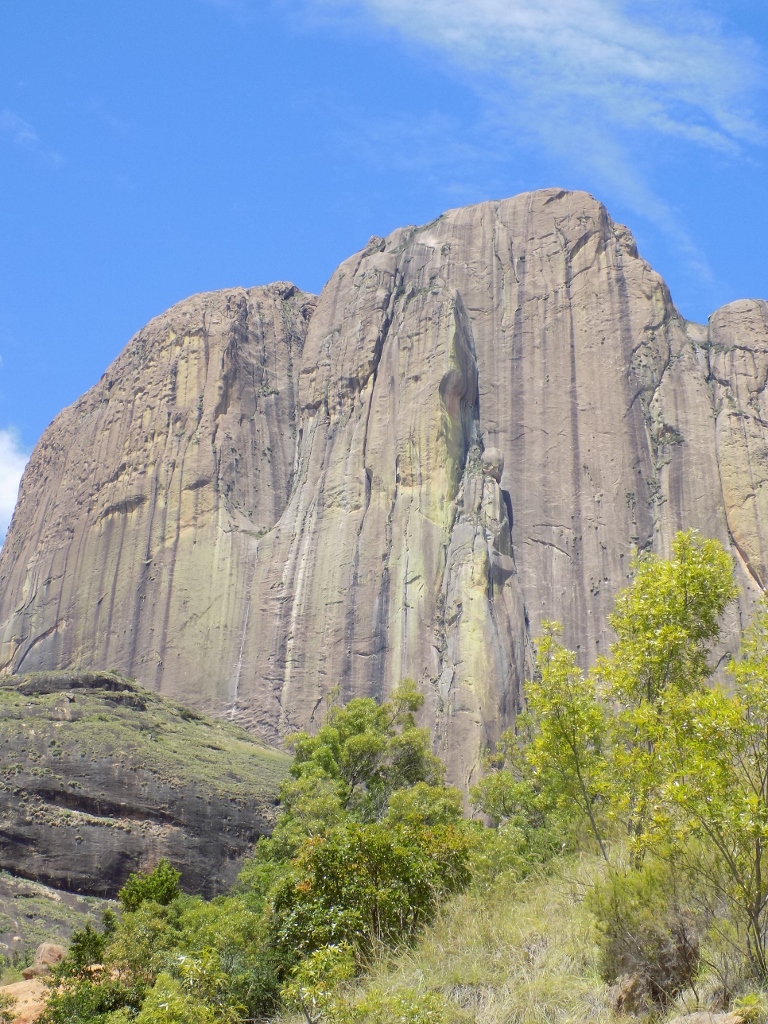 A part of Mount Tsaranoro
A part of Mount Tsaranoro
A little farther, our walk brought us to yet another “family tomb” and the only apparent difference here in comparison to the previous one we saw was that this one was covered.
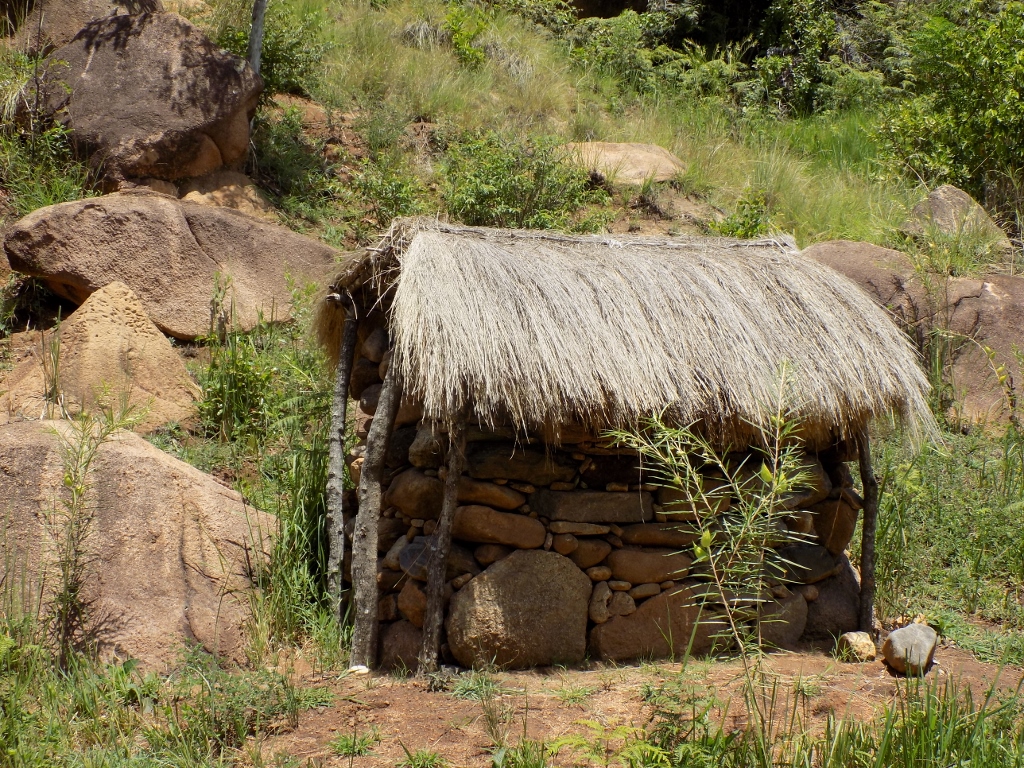 Yet another family tomb by the walking path in the Tsaranoro Valley
Yet another family tomb by the walking path in the Tsaranoro Valley